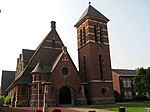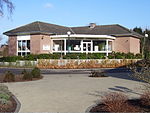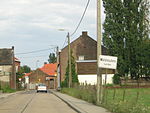Eliksem
Flemish Brabant geography stubsPopulated places in Flemish Brabant

Eliksem is a village located in the Belgian province of Flemish Brabant. It is part of the municipality of Landen. The village is known for the Battle of Elixheim, where the word Elixheim is an 18th-century English/French transformation of Eliksem.
Excerpt from the Wikipedia article Eliksem (License: CC BY-SA 3.0, Authors, Images).Eliksem
Brouwerijstraat,
Geographical coordinates (GPS) Address Nearby Places Show on map
Geographical coordinates (GPS)
| Latitude | Longitude |
|---|---|
| N 50.784166666667 ° | E 5.0097222222222 ° |
Address
P.C. Martelik
Brouwerijstraat 28A
3400
Flemish Brabant, Belgium
Open on Google Maps









